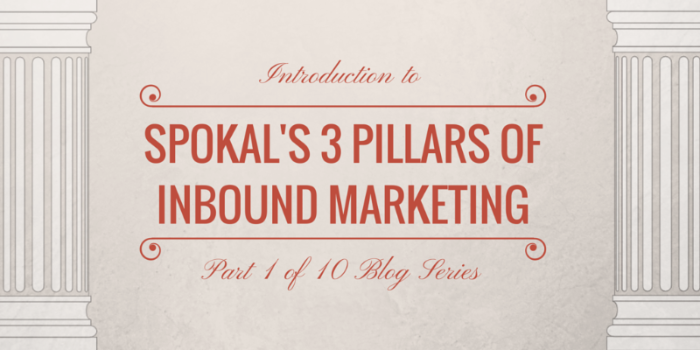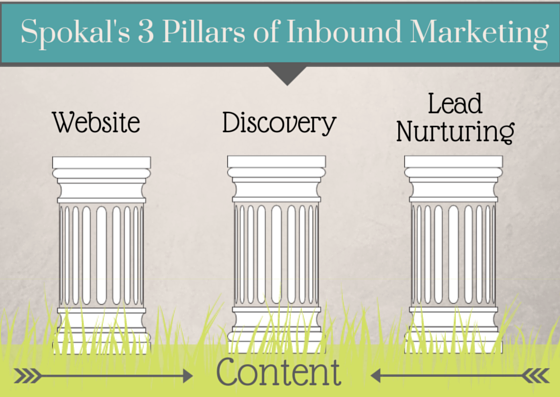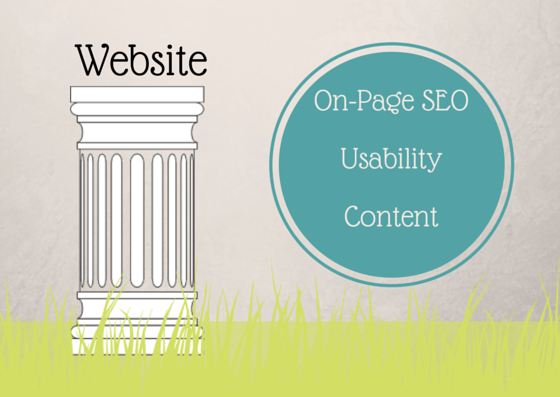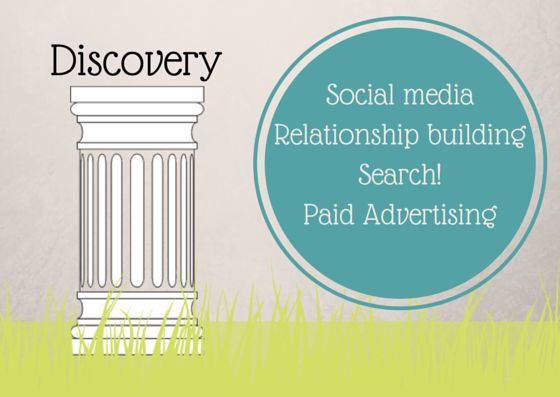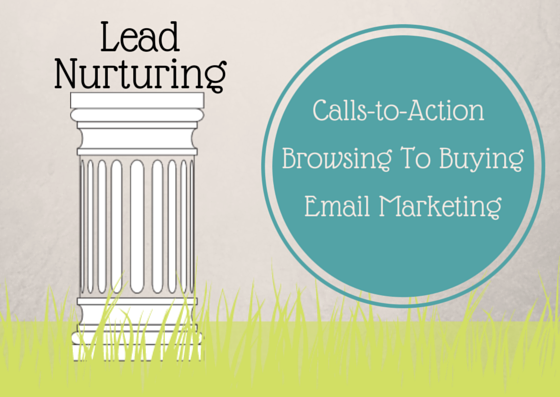Did you know that over 3 billion people are on the internet today? It’s true! On average, Google processes 40,000 searches per second – that’s 3.5 billion searches per day!
Everyone’s on it! And, these searches aren’t just about browsing for funny memes, cat pictures and games to play when you’re bored with 78% of users say that they use Google to research products and services!
That means people are using the internet – and the content that’s on the internet – with the intention to eventually buy.
For a business, the internet is probably the most amazing marketing tool at your disposal. Never before have you been able to reach so many targeted potential clients at such scale before. It’s unprecendented. It’s your Yellow Pages, TV adverts, magazine ads etc. all rolled up into one.
Why?
Because unlike paid ads – you’re not constrained by budget. You can earn your potential customer’s eyeballs. It lets small businesses with small marketing budgets perform at levels they could only dream of before the internet came on the scene.
And the most effective, most affordable way to market yourself online is via Inbound Marketing.
“Inbound Marketing is defined as a marketing strategy where businesses implement tactics to “get found”, or as we say, “get spotted” by customers.” (Source)
Inbound marketing has been proven time and time again as the most cost efficient and effective strategies for marketing on the web.
But don’t take me at my word.
- 82% of marketers who blog see positive ROI for their inbound marketing.
- 66% of consumers have made an online purchase as a result of a marketing email.
- 91% of B2B marketers and 86% of B2C marketers use content marketing
- Content marketing generates 3 times as many leads as traditional outbound marketing, but costs 62% less
The data is amazing, right?
Who wouldn’t want to get in on this action! All you need to do is…
Wait.
What do you need to do, exactly? Where do you even start? Sure, you’ve been to Google, but there’s just so many results! There’s so much information! TOO much information! And a lot of it sounds so complicated. And this website says one thing, another website says another thing.
It’s a bit of a mess out there.
We get it. It’s frustrating. It’s overwhelming.
That’s exactly why we wanted to create this blog series at Spokal.
We wanted to create a source of information on inbound marketing that was easy to understand, easy to put into action and, of course, that was all in one place. And that’s when we realized that what we had to give you guys was our understanding of how inbound marketing actually works.
And that brings us to…
Spokal’s 3 Pillars of Inbound Marketing!
There’s a lot of information on inbound marketing out there, and a lot of it is just empty noise.
To get started you really just need a good grasp on three things:
- Website
- Discovery
- Lead Nurturing
And what connects all of these things? Content, of course.
Seems simple, right? Well that’s because it is.
So it’s time to tune out all that other content that’s been buzzing around and focus your sights on this blog series to get a really good grasp on inbound marketing so that you can start marketing your business online in no time.
1. Website
So what do we mean when we say “website”? We mean:
- On-Page SEO
- Usability
- Content
So let’s take a closer look…
On-Page SEO
What is On-page SEO?
Search engine optimization is the term used to describe a set of processes that aim in optimizing a website for search engines.
Search is the #1 driver of traffic to content sites, beating social media by more than 300%! And after you get them on your site, you get to look forward to a 14.6% close rate (as opposed to outbound’s 1.7% close rate).
So yeah, it’s important.
What does on-page SEO entail?
Well, it’s often the more technical aspects of digital marketing, such as proper URL structures, optimized internal links, title tags, keeping your website regularly up to date etc.
You know, all the fun stuff! I’m kidding, of course. On-page SEO can be super tough!
Usability
Usability also plays a huge part on your website’s success with 47% of consumers expecting a web page to load in 2 seconds or less and 40% of people abandoning a website that takes 3 seconds or longer to load.
But it’s not just about loading speeds, it’s about an overall good user experience. How easy is it to use your website? Are your navigation buttons easy to find? Is it responsive? Does it look good and is it easy to navigate on a phone? These are important factors to consider when approaching inbound marketing – and we’ll be delving right into them!
Content
You’ll be hearing a lot about this. It’s basically the foundation of inbound marketing, and what we mean by that it play an important role for all three pillars – website, discovery and lead generation.
Content has to be on your website. It’s as simple as that. From landing pages, to blogs, to videos, to pricing pages, to “about me” sections… It’s all content and it’s all important. It’s what makes you visible to search engines, it’s what you share on social media, it’s what others will link to you for, it’s what makes customers aware of your business, consider purchasing with you and then – hopefully – actually purchasing with you.
It’s a pretty big deal.
Actually, it’s the biggest deal. But more of that later…
2. Discovery
Discovery is exactly what it says on the tin – it’s about how people discover your business online. Of course, your website is one of them – which we’ve already discussed, but there are also external factors such as:
- Social media
- Relationship building
- Search
- Paid Advertising
Social Media
Social media is huge nowadays. 74% of all internet users are on at least one social media network – and that figure skyrockets to 89% when we’re looking at the 18 – 29 age group.
So again we find ourselves returning to the age-old idea that we should be marketing where our audience is – and they’re on social media. And, to make things even better, they want you there too! 95% of millennials said they expected every brand to be at least on Facebook.
But why do people want to follow your business on social media?
So yeah… it’s important. In this blog series, we’ll be taking a look at the ins and outs of social media. Such as:
- How social media fits into inbound marketing
- The different social media platforms & how to use them
- What to post, how often and when.
- Social media management tools such as Hootsuite, Tweroid, Trello etc.
- The effect of social signals on SEO
Relationship Building
Relationship building? Don’t you mean link building? Kind of. Let me explain.
Link building “is the process of exchanging links with other Web sites to increase your own site’s backlinks and quality backlinks”.
But, as with anything that works, link building quickly became used and abused by marketers, which annoyed internet users, who then alerted Google to the problem, who then updated their algorithms so that they could spot unnatural links and penalize inauthentic and spammy link building practices.
All these changes made the internet a better place for us all.
But links are still considered “votes” for popularity and importance, so marketers still had to focus on getting links to their sites! And that’s when we began to differentiate what the difference between spammy “link building” and authentic “relationship building”.
Relationship building works towards gaining all the same benefits of link building (i.e. backlinks) but through an organic practice of creating relationships with popular websites in your industry. Once you get to know each other, the idea is that you can then work together for each other’s mutual benefit, either through collaborations, guest posts, or simply by linking back to your website because you created content that added value to their audience.
Search
Search engines are powerful sources of information in today’s world. It’s where we go to get answers to our questions, to find out more about a topic we’re interested in, or to research a product that we want and/or need.
It’s the number 1 driver of traffic to websites, and beats traffic from social media by more than 300%. Moreover, leads who have found your business through search engines have a 14.6% close rate, that’s in comparison to outbound leads’ 1.7% close rate.
But to be found through search engines, you have to be visible – and that means ranking high in the search engine results pages (SERPs) because 75% of users never scroll past the first page of search results.
But how do you get found through search engines? Content. Content. Content. Of course, there are factors that take place with regards to your content that plays a huge role in how well it will rank, for example user signals (bounce rates, CTRs etc), social signals (likes, +1s etc) and relevant terms.
Paid Advertising
Paid advertising is the more traditional advertising that we’ve seen before the digital age. It is, of course, rented traffic. Which simply means that once the ads (and money) stop flowing, the audience stops coming.
Still, if you have the funds, paid advertising does work quite effectively with 64.6% of people click on Google Ads when they are looking to buy an item online!
In particular, we’ll be discussing:
- Display Ads/Banner Ads, Text Ads
- Google Adwords
- Alternative places to advertise: Facebook, LinkedIn – Bing/Yahoo – StumbleUpon
We’ll also take this opportunity to discuss landing pages in relation to paid advertisement, but also in relation to other marketing initiatives.
A Note on Off-Page SEO
Social media signals, search and relationship building are considered “off-page SEO” (as opposed to the on-page SEO which we mentioned in our “website” section).
Off page SEO refers to techniques that can be used to improve the position of a web site in the search engine results page (SERPs). Many people associate off-page SEO with link building but it is not only that. In general, off Page SEO has to do with promotion methods – beyond website design –for the purpose of ranking a website higher in the search results. (Source)
Off-page SEO has a huge impact on the success of your website, so we’ll be diving deep into what you can do to get your social media, search and relationship building game on.
Paid advertisement doesn’t affect how you rank in search engine results, so it’s not SEO. However, it can drive traffic by the very nature of advertisement – i.e. to get in front of eyeballs – so it’s considered a part of the discovery process.
3. Lead Nurturing
Creating great content, having a stellar website, building relationships, working on your social media distribution are all factors that work to generate interest or leads in your business. But at what point does this interest become profitable?
Lead nurturing is all about taking your leads, and turning them into paying customers. To put it bluntly: Lead nurturing is where the money comes in.
In this section of our blog series we’ll be discussing
- Strategies To Get Them From Browsing To Buying
- The Art of Effective Calls-to-Action (CTAs)
- Email Marketing (MSPs, list building, segmentation, email layout)
From Browsing To Buying
Not everyone that comes to your website is going to be ready to buy. In fact, approximately 96% of visitors that come to your website aren’t! But… they are looking for information.
And if they like what they see, they might want some more. And some more. And some more…
The idea is that if you create relevant/entertaining/educational content, your leads will be kept interested in your business, while also growing their knowledge of your product/service/industry so when they are ready to buy, you’ll be at the top of their minds.
Of course, this also means that your leads are all at different stages of the buying cycle with some just discovering you now and others having known about you for a while.
There are 3 main stages of the buying cycle: Awareness, consideration and purchase.
Your website and discovery do a lot of work on building awareness and consideration, but it’s through your lead nurturing campaigns that you can really help your leads move through the cycles efficiently.
A large part of lead nurturing is creating the right kind content, for the right kind of lead that’s targeted at them at just the right time. You don’t offer someone a burger directly after they’ve eaten one, do you? But offering them an ice-cream for dessert makes perfect sense! It’s all about timing.
But how do you know if your prospective customer has eaten a burger yet? Have they even looked at the menu? Are they actually really looking for a kebab instead and just stumbled on your restaurant by accident? In other words: how do we know where our leads are in the buying cycle?
Lead scoring.
Lead scoring is a strategy where you use your leads information in order to alert you to what stage of the buying cycle that they’re in, so that you can send them targeted messages.
In this part of blog series we’ll discuss how you can score your leads, and send them targeted relevant content that will encourage them through the buying cycle.
The Art of Effective Calls-to-Action (CTAs)
CTAs are a battle ground between you and your prospective customer. The right CTA will encourage people to take action, but the wrong one could push them away for good.
We’ll run through how you can create effective CTAs using language, colors, formats and placement. We’ll then talk about the different types of CTAs, which ones are effective for what, and how to A/B test your CTAs so you’re getting the most of your website traffic. We’ll then discuss strategies that get your readers to opt-in: Ask, trick or force? We’ll run through each of them so you can decide what works best for you!
Email Marketing
There’s this ugly rumor going around that email marketing is dead, when the fact is that 74% of consumers prefer to receive marketing messages via email. Email marketing is a pretty big deal, and it’s consistently proven to bring in a substantial portion of a business’s ROI.
Well, with a mail service provider (MSP) of course. There are plenty of MSPs that will help you nurture your leads by sending them well-crafted and well-timed emails, and we’ll run through some of the top providers with you.
We’ll also look at list building and different tactics to get your list growing.
And then we’ll dive more into how to best segment your email lists so that you’re sending targeted messages to your leads as they’re working their way through the buying cycle.
And, as always, image is everything. How you layout and design your emails is really important so we’ll go through some email layout best practices with you too!
Conclusion
From your website, to how people discover you and finally to nurturing your leads, Spokal’s 3 Pillars Of Inbound Marketing Blog Series hopes to cover all the bases to help you get started at becoming an inbound marketing superstar!
Did we miss anything you’d like for us to cover? Please let us know in the comments below and we’ll do our very best to get those answers to you!
Stay tuned for part 2 of our 10 part blog series “Content: The Lifeline of Your Online Business” next Tuesday 24th of February!
Want help with your inbound marketing?
 That's what we're here for! We've guides, templates, an A-Z dictionary of online marketing terms... all waiting to be yours!
That's what we're here for! We've guides, templates, an A-Z dictionary of online marketing terms... all waiting to be yours!
Spokal’s 10 Part Content Marketing Series
- Introduction to Spokal’s 3 Pillars of Inbound Marketing (Content Marketing Series Part 1 of 10)
- Content Marketing: The Lifeline of Your Online Business (Content Marketing Series Part 2 of 10)
- The 8 Key Factors in Creating Great Content (Content Marketing Series Part 3 of 10)
- Website Usability and On-Page SEO (Content Marketing Series Part 4 of 10)
- A Guide To Off-Page SEO (Content Marketing Series Part 5 of 10)
- The Ins & Outs Of Social Media Marketing (Content Marketing Series Part 6 of 10)
- A Beginner’s Guide To Paid Online Advertising (Content Marketing Series Part 7 of 10)
- How to Get them from Browsing to Buying: Lead Nurturing (Content Marketing Part 8 of 10)
- The Art of Creating Compelling CTAs (Content Marketing Series Part 9 of 10)
- The Beginner’s Guide To Email Marketing (Content Marketing Series Part 10 of 10)
